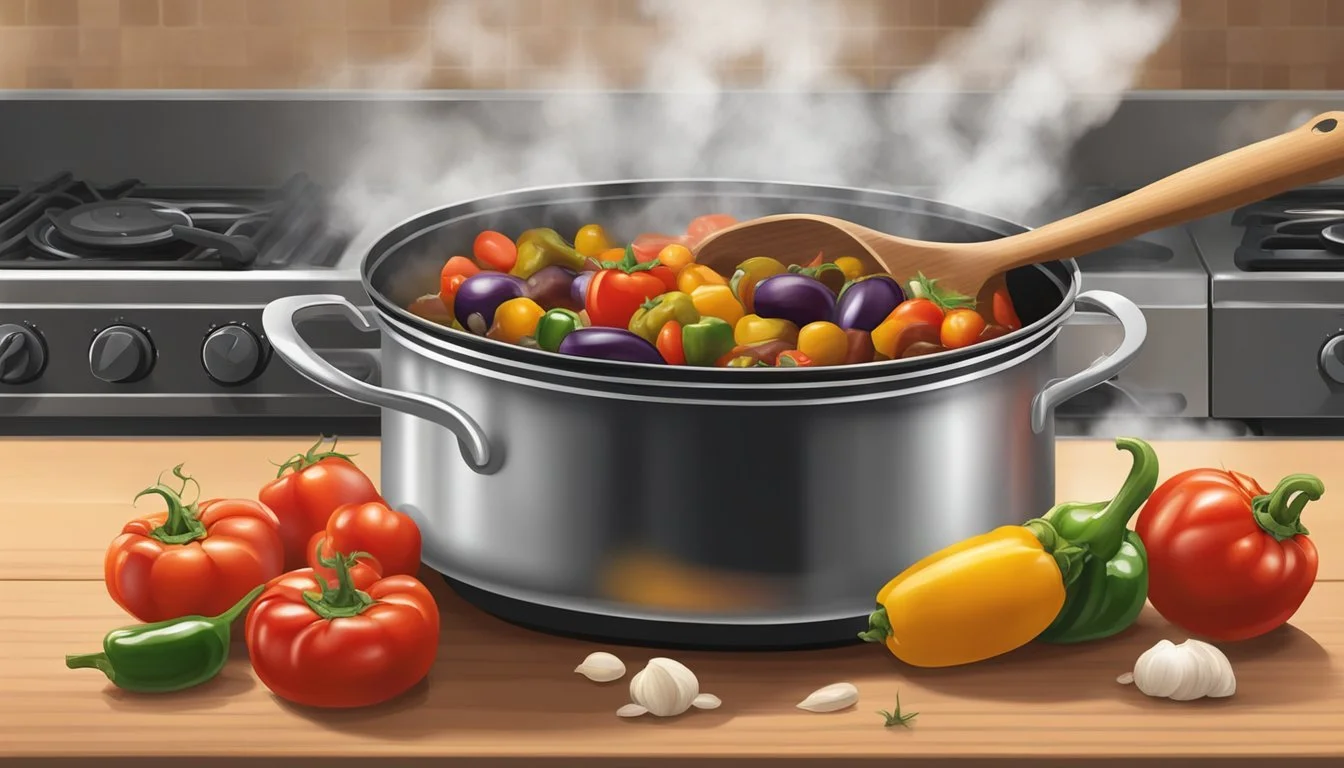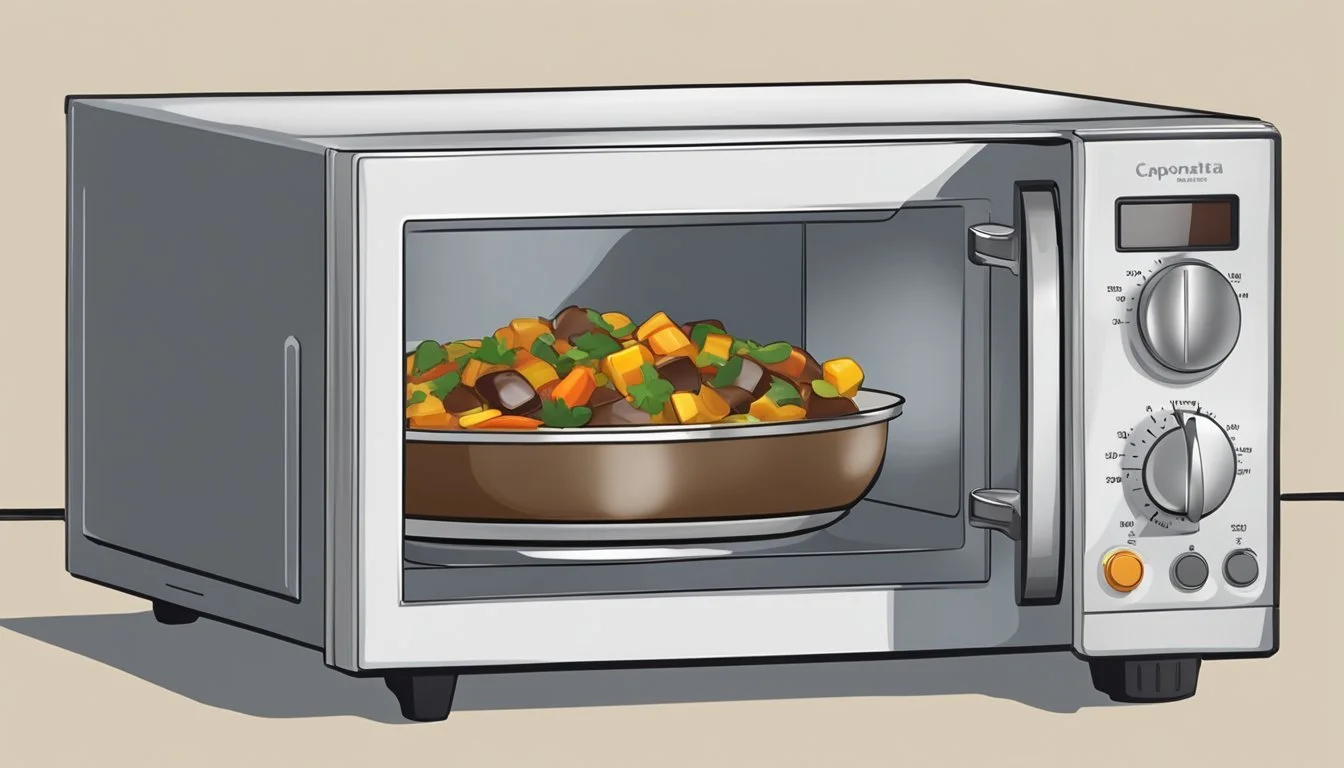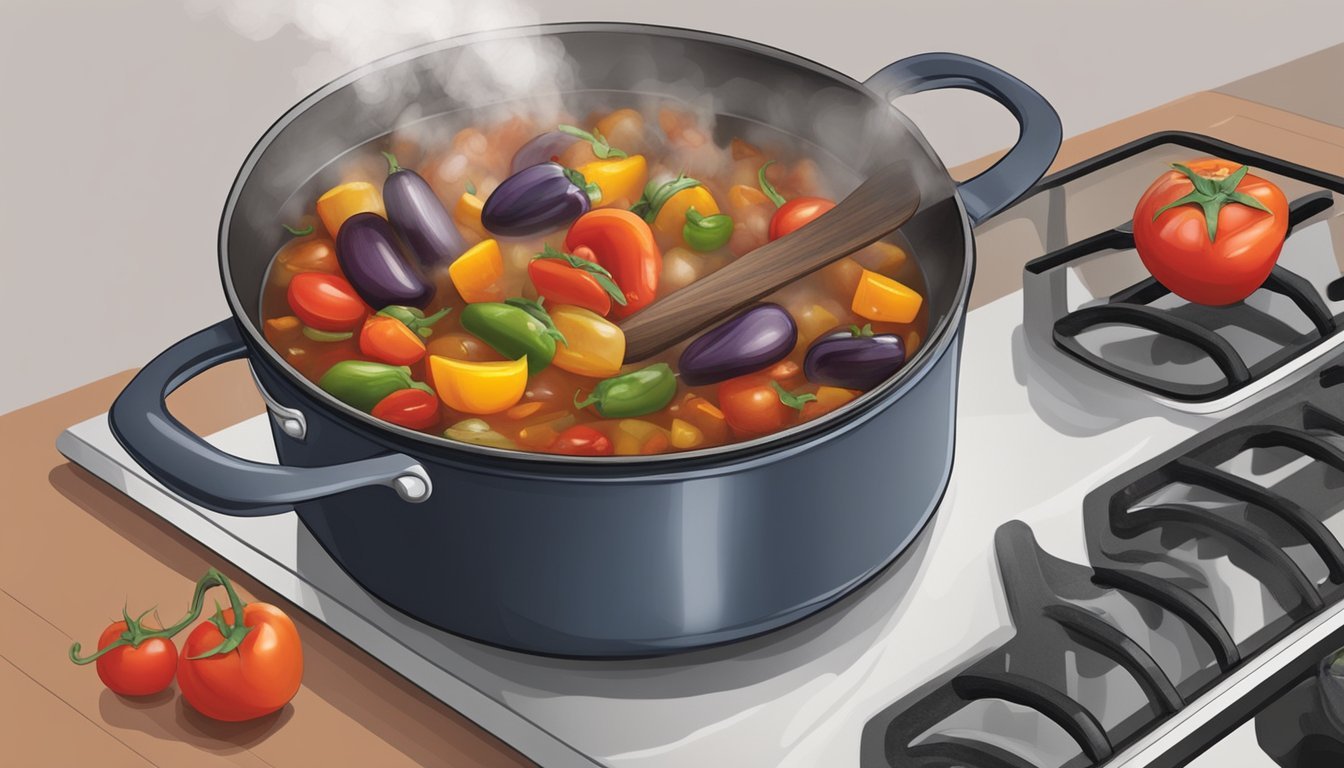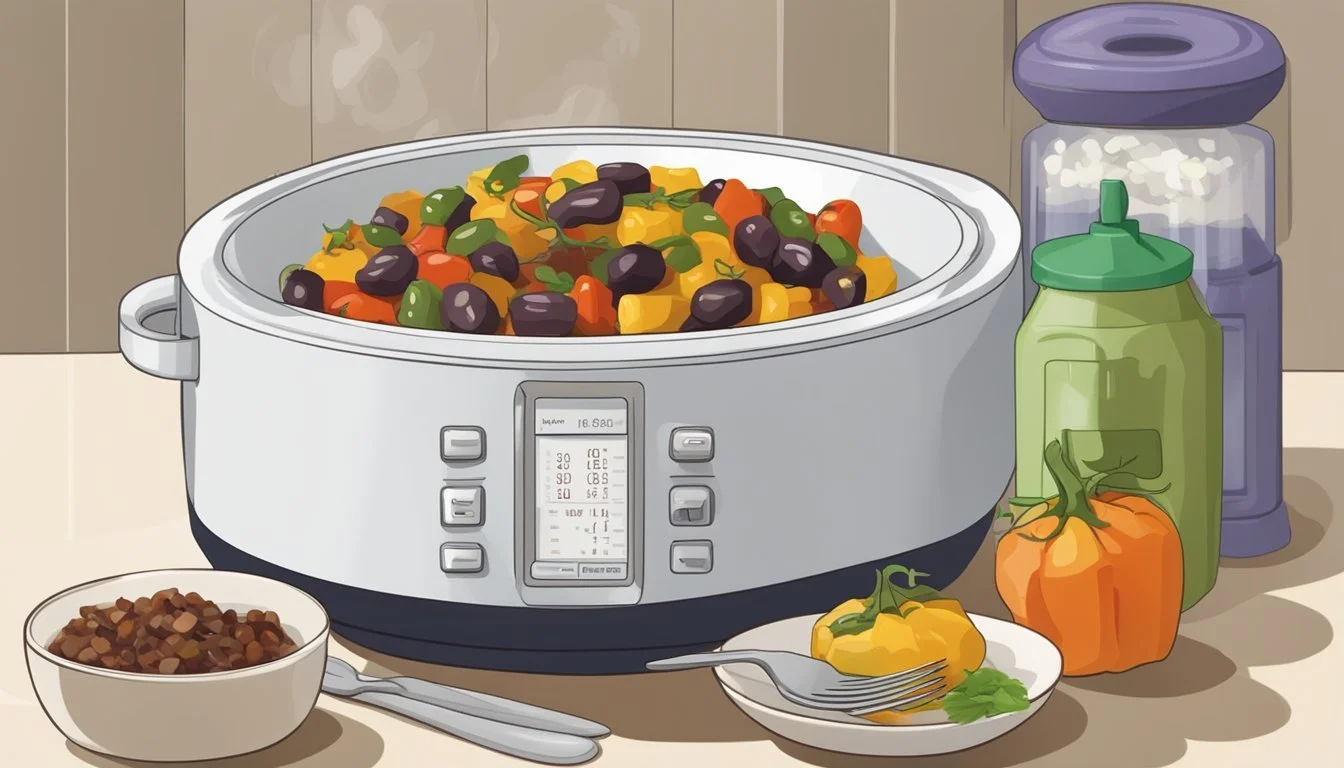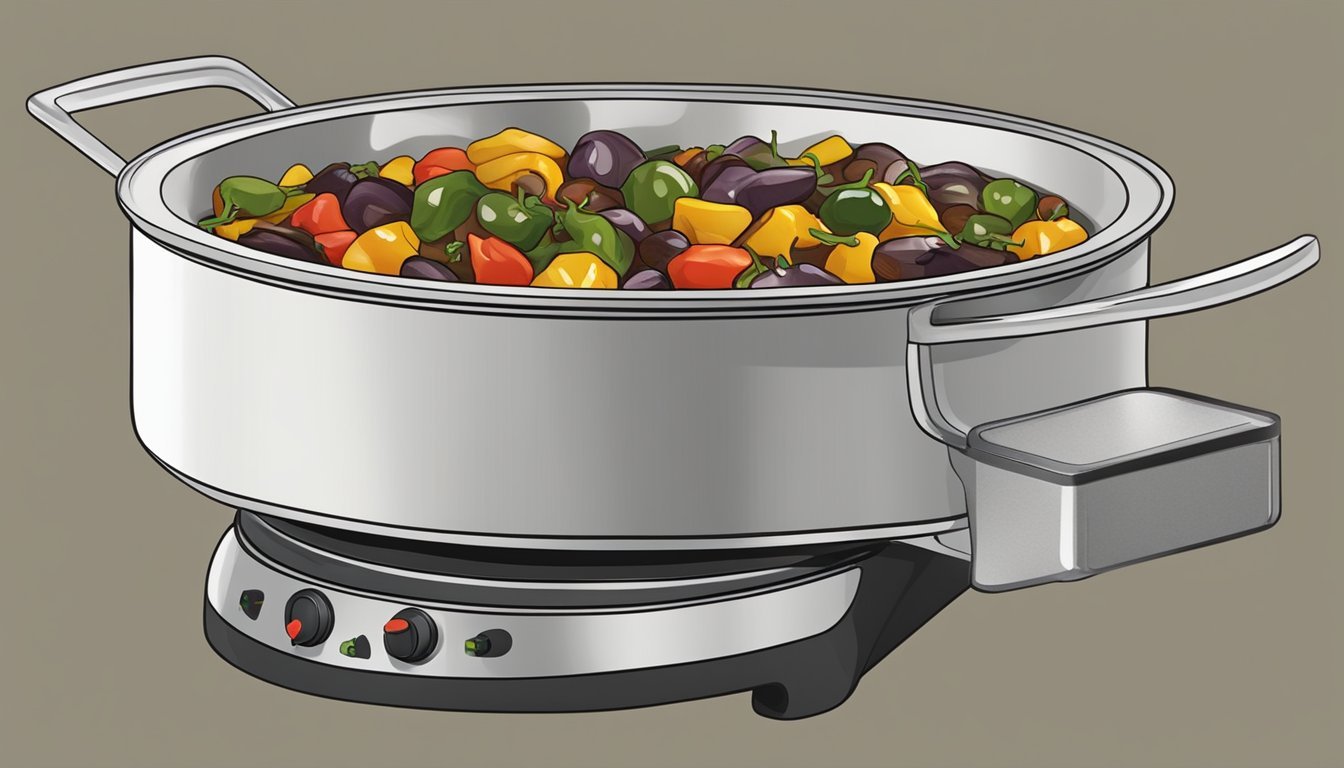How to Reheat Caponata
Best Methods and Tips
Caponata, a traditional Sicilian appetizer, is a delightful blend of eggplant, bell peppers, tomatoes, and a mix of sweet and tangy flavors. Whether served as part of a Mediterranean spread or enjoyed on its own, this dish is a crowd-pleaser. Leftovers can be just as delicious as the freshly prepared dish, but ensuring the caponata retains its texture and rich flavor when reheated is key.
The best way to reheat caponata is by using a stovetop technique. This method allows you to control the heat, preventing the eggplant and other vegetables from becoming mushy. Simply simmer the caponata on low to medium heat, stirring occasionally to ensure even heating.
For those short on time, the microwave is a quick alternative. Reheat the caponata for about 2 to 3 minutes, making sure to stir it halfway through to distribute the heat evenly. Adding a splash of water or olive oil can help maintain the dish's original texture and moisture.
Understanding Caponata
Caponata is a traditional Sicilian dish known for its rich blend of flavors and textures. It combines vegetables with a characteristic sweet and sour profile that delights the palate.
Origin and History
Caponata originates from Sicily, Italy, with its roots tracing back to the island's diverse cultural influences. Over centuries, the dish has been adapted by Arab, Spanish, and Italian cuisines, each leaving a mark on its development. Historically, caponata was a popular way to enjoy seasonal vegetables while preserving them. The recipe evolved from being a humble peasant food to a celebrated culinary delight.
Main Ingredients
Caponata primarily features eggplant, which forms the base of the dish. Other essential vegetables include tomatoes, onions, celery, and bell peppers. Capers, olives, and pine nuts add depth to its flavor. The unique sweet and sour taste comes from a combination of vinegar and a touch of sugar. Extra virgin olive oil is used to sauté the vegetables, enhancing the dish's richness.
Flavor Profile
The flavor profile of caponata is a unique balance of sweet, sour, and savory. The eggplant absorbs the tangy vinegar, while the sugar adds a subtle sweetness. Olives and capers contribute a briny, salty note, complementing the sweetness perfectly. This combination creates a harmonious blend that is both complex and satisfying. Its texture varies from soft eggplant to slightly crunchy celery and peppers, offering a delightful mouthfeel.
Common Variations
While traditional caponata remains celebrated, various regional and contemporary versions exist. Some recipes include raisins or almonds for added sweetness and texture. Others may adopt zucchini or replacing eggplant entirely. Serving methods also vary, with caponata enjoyed warm, at room temperature, or even chilled. These variations reflect local ingredients and personal preferences, ensuring each version has a unique twist while maintaining the essence of the original dish.
Preparation Before Reheating
Properly storing and thawing caponata ensures it retains its delicious flavors and textures when reheated. Follow these essential steps to keep it fresh and ready for later use.
Storing Caponata
After preparing caponata, it should be stored in an airtight container. This helps in maintaining its moisture and preventing any contamination.
Keep the container in the fridge if you plan to consume it within a few days. This preserves the flavors and prevents spoilage.
For longer storage, use a freezer-safe container and store the caponata in the freezer. Wrap the container in aluminum foil for added protection. This method keeps it fresh for up to three months.
Always label the container with the date to keep track of its storage duration.
Thawing If Frozen
To thaw frozen caponata, remove it from the freezer and place it in the fridge overnight. This gradual thawing process helps maintain its texture and flavor.
In a rush, you can thaw it at room temperature for a few hours. Ensure it’s covered to prevent contamination during the thawing process.
If the caponata seems dry after thawing, add a small amount of extra virgin olive oil before reheating. This step helps restore its original consistency and flavor.
Reheating Methods Overview
Reheating caponata requires careful attention to maintain its distinctive texture and flavor. Different methods, such as using a skillet, oven, microwave, or air fryer, offer varying results.
Using a Skillet
Using a skillet on the stovetop is one of the best methods to reheat caponata. This technique ensures even heating and preserves the dish’s texture and flavors.
Preparation: Use a non-stick skillet and add a small amount of olive oil.
Heating: Set the heat to low or medium to avoid scorching.
Stirring: Stir occasionally to promote even reheating.
This method revives caponata with its blend of tangy and sweet flavors intact. The low and gentle heat helps maintain the dish's original texture.
Oven Reheating
Oven reheating is another effective way to warm caponata. This technique helps to evenly heat larger portions without compromising texture.
Preheat: Set the oven to 350°F (175°C).
Arrange: Place the caponata in an oven-safe dish and cover it with foil to retain moisture.
Heat: Warm for approximately 15-20 minutes, checking and stirring halfway through.
Using an oven ensures that the flavors meld well without drying out the dish. Covering it with foil prevents overcooking.
Microwave Method
The microwave provides a quick and convenient method, though it may affect the texture slightly.
Preparation: Place the caponata in a microwave-safe bowl.
Cover: Use a microwave-safe cover to retain moisture.
Heating: Set to medium power and heat for 1-2 minutes, stirring halfway.
While the microwave is fast, it can sometimes make the caponata mushy. Stirring helps to distribute the heat evenly.
Air Fryer Technique
Reheating caponata in an air fryer can help keep the texture firm while ensuring even heating.
Preheat: Set the air fryer to 375°F (190°C).
Arrange: Place the caponata in the air fryer basket in an even layer.
Cook: Reheat for 5-7 minutes, shaking the basket midway.
The air fryer method is effective for maintaining a good balance of texture and flavor. This technique helps the caponata regain some of its original crispiness.
Each of these reheating methods offers a unique way to enjoy leftover caponata with minimal loss of quality.
Best Practices for Reheating
Reheating caponata while retaining its delightful sweet and sour balance is essential. Different methods offer various benefits and should be chosen carefully to preserve flavor and texture.
Stovetop Method:
Using the stovetop is ideal for reheating caponata.
Cook Time: Approximately 5-7 minutes on low to medium heat.
Method: Add a bit of olive oil to a pan.
Instructions: Stir occasionally to avoid scorching and ensure even heating.
Result: Maintains texture and balanced flavors.
Microwave Method:
The microwave offers a quicker option but requires attention to prevent texture changes.
Cook Time: 2-3 minutes.
Method: Place caponata in a microwave-safe dish.
Instructions: Cover and heat in short intervals, stirring every 30-45 seconds.
Tip: Adding a small amount of water can prevent drying out.
Caution: Monitor closely as it can lead to mushy textures.
Oven Method:
Although less common, the oven provides gentle and even heating.
Cook Time: Around 15-20 minutes at 300°F (150°C).
Method: Preheat the oven.
Instructions: Place caponata in an oven-safe dish, cover with foil to retain moisture.
Result: Ensures a consistent, hot dish without degrading the flavor.
Each method aims to reheat the dish without compromising its integrity. The goal is to enjoy the caponata as if freshly made, with its unique sweet and sour blend intact. Employ these best practices to savor this Sicilian delicacy fully.
Serving Reheated Caponata
When serving reheated caponata, it's essential to pair it with the right accompaniments and present it attractively. This ensures the dish remains an appetizing and delightful experience.
Accompaniments and Pairings
Reheated caponata is versatile and pairs well with various dishes. It can be enjoyed as an appetizer or a compelling side dish. Common pairings include bruschetta and crostini, where the caponata is spread atop toasted slices of bread. This combination enhances its savory and tangy notes.
For a more substantial meal, pasta makes an excellent companion. Toss reheated caponata with freshly cooked pasta for a flavorful and satisfying main course. Alternatively, serve it alongside grilled proteins such as chicken or lamb chops to complement the rich flavors.
Caponata also pairs beautifully with vibrant, fresh salads and roasted vegetables. This adds both color and texture to the meal. Other options include combining it with polenta or incorporating it into a bacon and cheddar quiche for a gourmet twist.
Presentation Tips
Presentation can elevate the visual appeal of reheated caponata. Serve it in a shallow, wide dish to showcase its colorful ingredients like eggplant, tomatoes, and pine nuts. Garnish with fresh basil leaves or a sprinkle of toasted pine nuts for added texture and a pop of color.
When serving with bruschetta or crostini, arrange the toasted bread slices around a central bowl of caponata. This makes it easy for guests to help themselves. Ensure the reheated caponata is served at the right temperature, warm but not too hot, to preserve its tender texture and rich flavors.
For pasta dishes, mix the reheated caponata thoroughly with the pasta, ensuring every bite is flavorful. Top with grated cheese and a few basil leaves for a delightful finishing touch.
Tips and Tricks
Reheating caponata requires careful attention to preserving its delicate balance of flavors. Whether adjusting seasonings or avoiding common errors, these tips will help maintain the dish's unique taste and texture.
Adjusting Seasonings After Reheating
After reheating caponata, it's crucial to taste and adjust the seasonings to ensure the flavors remain vibrant. Salt and pepper are the primary seasonings to check, as they can diminish during the reheating process. Add a pinch of each if needed.
Sugar and vinegar can help maintain the perfect balance of sweet and tangy. If the caponata tastes too sour after reheating, a small amount of sugar can counteract this. Conversely, a splash of vinegar can enhance tanginess if the dish is too sweet.
Fresh herbs like basil or parsley can be added after reheating to brighten the flavors. This can elevate the overall taste profile, making the dish taste freshly made. Sprinkle the herbs just before serving to retain their vibrant color and flavor.
Avoiding Common Mistakes
To avoid common mistakes when reheating caponata, use the stovetop method. Heating it gently on low to medium heat and stirring occasionally helps prevent scorching and maintains the texture. The microwave, although convenient, can make the vegetables too soft.
Avoid reheating at high temperatures, as this can cause the vinegar and sugar to caramelize, altering the flavor profile. Patience is key to maintaining the caponata's integrity.
When reheating, ensure even distribution of heat by stirring frequently. This helps in preventing any part of the dish from becoming overcooked or burnt, ensuring all flavors meld together harmoniously.
Using a heavy-bottomed pan can also distribute heat more evenly, protecting the caponata from burning and retaining its desirable savory, sweet, and sour balance.
Food Safety Considerations
Caponata needs careful handling to ensure safety.
Storing Caponata
Store caponata in airtight containers in the refrigerator at a temperature below 40°F (4°C). This prevents bacterial growth and preserves flavor.
Freezing and Thawing
Freezing:
Let the caponata cool to room temperature.
Place in airtight, freezer-safe containers or bags.
Label with the date to track freshness.
Thaw in the refrigerator overnight.
For quicker thawing, use the microwave's defrost setting.
Reheating
Stovetop Method:
Place caponata in a saucepan.
Add a bit of water or olive oil.
Heat gently on low to medium, stirring occasionally.
Microwave Method:
Use a microwave-safe dish.
Cover with a microwave-safe lid or plastic wrap.
Heat in short intervals, stirring occasionally.
Temperature Control
Cold Storage: Keep caponata cold until ready to eat. Bacterial growth occurs between 40°F (4°C) and 140°F (60°C). Keeping it cold prevents this.
Hot Storage: Ensure caponata is reheated to at least 165°F (74°C) for safety.
Proper handling and storage are essential for maintaining the quality and safety of caponata. Always observe good food safety practices to avoid foodborne illnesses.

